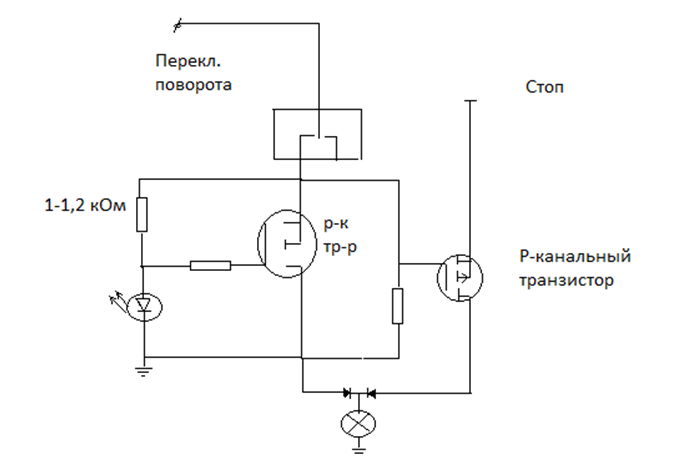The idea of \u200b\u200bdesigning a turn signal relay for LEDs with their own hands sooner or later visits most motorists. It's not even that outdated devices break down quite often. It's just that LEDs give a lot more options when indicating turns, and refinement is a fairly simple task even for a novice motorist.
Replacing conventional light bulbs can lead to several problems, one of which is flashing too fast. This means that the characteristics of the "native" relay are not designed to work with LEDs, and it operates in emergency mode.
Although the installation of LEDs to indicate turns has its own drawbacks (changing the angle of dispersion, turning on too abruptly, etc.), such schemes have many advantages.
LED turn signal relays for domestic cars
Traditionally, in GAZ and VAZ cars, the relay can be found on the engine shield located behind the dashboard. The device can be analog (231.3747) or digital (494.3747). They differ significantly in size, they can be distinguished by eye, but the relays are usually marked. Refinement is possible only for the digital version, so in which case it must be purchased.
The first step is to open the case. To do this, pry off the latches on both sides of the cover with a flat screwdriver.
Disassembled relay and required chip (Fig. 1).
- Break the track on the circuit board (just cut out part of it with a blade or a clerical knife). For greater reliability, it is better to isolate this area with nail polish or any other composition. The binding goes to the 7th channel. This is also true for relays 495.3747.., 494.3787…, as well as for almost any other microchip-based relay. Alteration of the circuit for LEDs on them takes place in a similar way. The only catch is to correctly determine the required channel, its location varies depending on the specific board.
- The next method has one drawback - the lack of indication of LED burnout when indicating turns (they are quite reliable, so this is not a big deal). In Fig. 1, the capacitor is highlighted in green, which is responsible for the frequency of the generator, and refinement is applied to it. In order for the LEDs not to blink, but to work more smoothly, this frequency must be reduced by 2 times, which means that the capacitance of the capacitor should be doubled (4.7 uF at 50 V or simply add another one of the original rating).
- Installing additional resistors in parallel with the LEDs will also help solve the problem. The only catch is to choose the right value for them so that the resistance simulates the load of the lamp. On average, the resistor value is selected from the range of 2-2.5 kOhm. Alteration is much easier with special. equipment, but the resistance value can be selected experimentally.
- You can also solder the LEDs in series. The load from 5 fixtures should be enough to open the circuit. Such schemes for turns are quite common.
Do-it-yourself turn relay
Refinement of the turn relay is an exciting, but rather time-consuming task. Sometimes it is much easier to assemble a new one, because in general only 3 parts are required. The main thing is that the connectors are consistent.
At the nearest radio market you need to purchase:
- sufficiently powerful field-effect transistor;
- resistor;
- flashing LED (best results are shown by red LEDs).
Buying all 3 items will cost only a couple of dollars.

Components are soldered "on the forehead" with the help of surface mounting.
Naturally, in the light of day, the power of one diode is clearly not enough. Such a turn relay circuit can be used to set the flicker frequency. That is, the turn relay is completely replaced, and the turn signal itself will flash.
Turn signals for imported cars
For the most part, foreign manufacturers have long abandoned the use of turn signals on conventional lamps. Therefore, the completion of the turn relay for LEDs is required only if it is replaced or if it is planned to change the principle of operation of the device.
Recently, the use of the "American" turn relay circuit has become increasingly popular. It does not have the usual orange color, and the LEDs glow red both during a stop and when a reversal is indicated.

Many do not like this alteration of signal lighting, but looking closely, you can find such a system in action at one of the city's traffic lights.
Inserting LEDs into a turn signal or changing the principle of operation of an existing relay is not such a difficult task. Refinement of the scheme or the creation of a new one will not require much effort and time, but the car will be prepared for all traffic situations.



